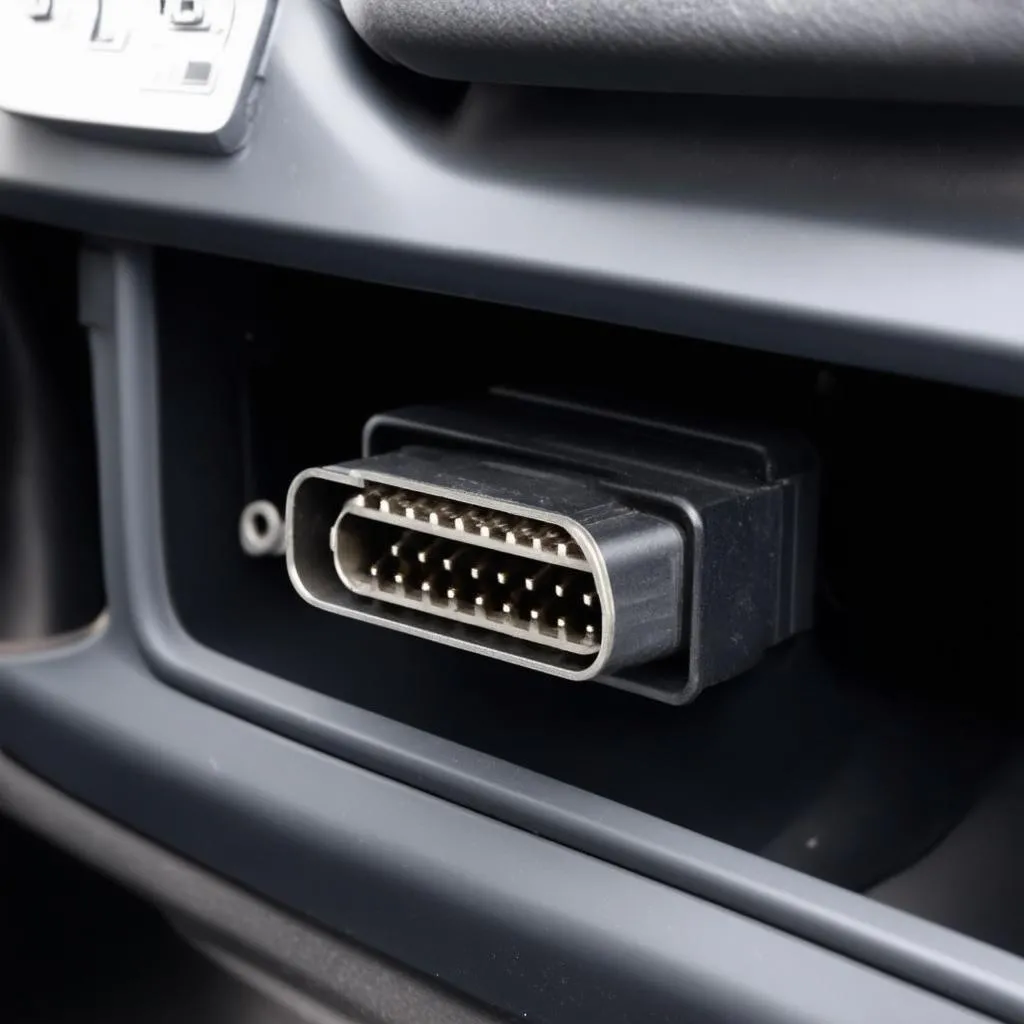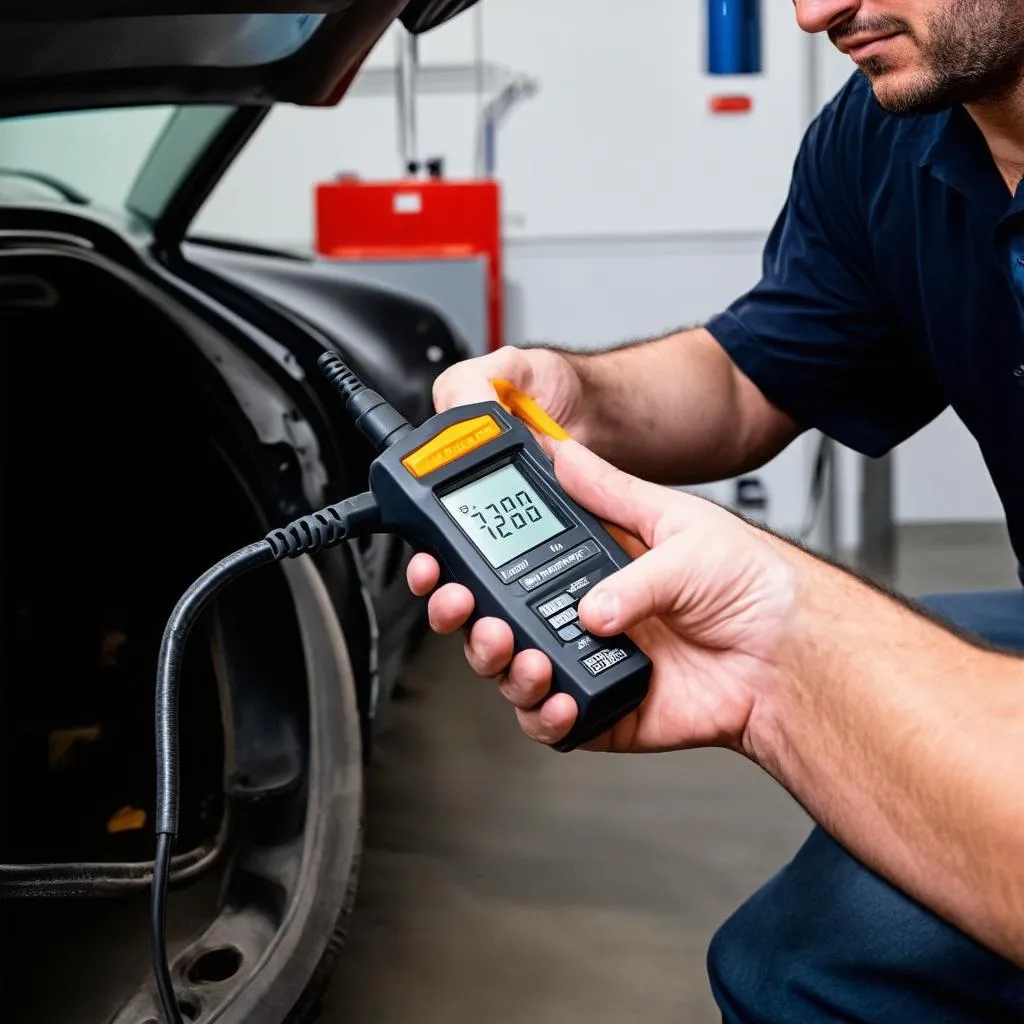Have you ever felt like you were speaking a foreign language? That’s what it can feel like when you’re trying to diagnose a car problem, especially when your emissions test fails, and the dreaded message pops up: “Emissions can’t extract information for vehicle OBD computer.” It’s like your car is speaking in tongues, and you’re left scratching your head.
This frustrating situation is more common than you think, and it can stem from a variety of issues. But don’t worry, this isn’t an insurmountable obstacle! This article will help you understand the language of your car’s computer and guide you through common causes and solutions.
Decoding the Message: What Does “Emissions Can’t Extract Information” Mean?
Before we dive into solutions, let’s understand the problem. This error message means the emissions testing equipment cannot communicate with your vehicle’s On-Board Diagnostics (OBD) system. Think of it like this: the testing equipment is trying to have a conversation with your car’s brain (the OBD computer), but the line is dead.
This “communication breakdown” prevents the testing center from verifying your car’s emissions output, which is crucial for passing your emissions test.
Why Can’t My OBD Computer Communicate? Unveiling the Culprits
There are several potential culprits behind this communication breakdown.
1. Loose or Damaged OBD-II Connector:
Your car’s OBD-II port, typically located under the dashboard on the driver’s side, could be loose, damaged, or even have bent pins.
2. Blown Fuse:
A blown fuse linked to the OBD-II system can cut off power to the port, preventing communication.
3. Faulty OBD-II Cable:
Sometimes the problem isn’t with your car, but with the diagnostic cable used by the testing center. A faulty cable can interrupt the flow of information.
4. Software Issues:
Outdated or corrupted software in your car’s computer can lead to communication errors.
5. Deeper Electrical Problems:
In some cases, a more serious underlying electrical problem, like a faulty wiring harness or a malfunctioning ECU (Engine Control Unit), could be the root cause.
 OBD-II Port
OBD-II Port
Reconnecting the Conversation: How to Fix the Issue
Now that we’ve identified the potential culprits, let’s explore some solutions.
1. Check Your OBD-II Port:
-
Visual Inspection: Begin with a visual inspection of your OBD-II port. Look for any signs of damage, dirt, or debris that might be obstructing the connection.
-
Connector Check: Gently wiggle the connector to ensure it’s securely plugged in.
2. Inspect the Fuse Box:
Consult your car’s owner manual to locate the fuse box and identify the fuse associated with the OBD-II system. A blown fuse will have a broken wire inside. Replace it with a fuse of the same amperage.
3. Test with a Different OBD-II Cable:
If possible, ask the testing center to try a different OBD-II cable. This can help determine if the cable is the issue.
4. Software Update:
Schedule an appointment with a qualified mechanic or dealership to check for any available software updates for your car’s computer.
5. Consult a Professional:
If the problem persists after trying the above steps, it’s best to seek professional help. A qualified mechanic can diagnose the issue with a professional-grade OBD scanner and recommend the appropriate repairs.
 Mechanic Diagnosing Car
Mechanic Diagnosing Car
Beyond the Technical: A Holistic Perspective
While the technical aspects of this issue are important, it’s also crucial to consider the experience from a holistic perspective. A car, like any complex system, can be influenced by energy and intention.
Just as a cluttered and disorganized space can disrupt your peace of mind, a neglected or poorly maintained car can lead to energetic blockages that manifest as physical problems.
Consider this experience an opportunity to reconnect with your vehicle. Take some time to clean your car’s interior and exterior, paying attention to the OBD-II port area. Visualize clear and positive energy flowing through your car’s electrical system, promoting harmony and optimal functioning.
FAQs: Your Burning Questions Answered
Q1: Will disconnecting my car battery reset the OBD system and fix the problem?
While disconnecting the battery can sometimes clear minor glitches, it’s unlikely to resolve a persistent communication error. It’s best to address the root cause.
Q2: Can I drive my car if the OBD system can’t communicate?
In most cases, you can still drive your car. However, a malfunctioning OBD system might prevent your car from passing emissions tests and could indicate a more serious underlying issue that requires attention.
Q3: How often should I get my car’s OBD system checked?
It’s a good practice to have your car’s OBD system checked annually or whenever you experience any warning lights on your dashboard.
Related Questions
Here are some related questions you might find helpful:
- What are the most common OBD-II error codes?
- How to choose the right OBD-II scanner for my car?
- Can I fix OBD-II problems myself?
- Where can I find a reputable mechanic specializing in car diagnostics?
Explore More at techcarusa.com
Looking for more information on car diagnostics, repair tips, and product reviews? Explore our website, techcarusa.com, for a wealth of resources to keep your car running smoothly.
Need personalized assistance? Contact our team of automotive experts via WhatsApp at +84767531508. We’re here to help you navigate the world of car repairs with confidence!